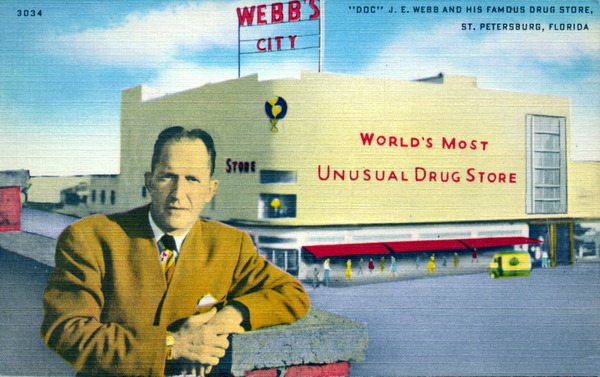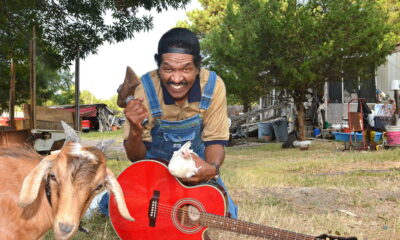Know
The legend of ‘St. Petersburg’s P.T. Barnum,’ through story and song
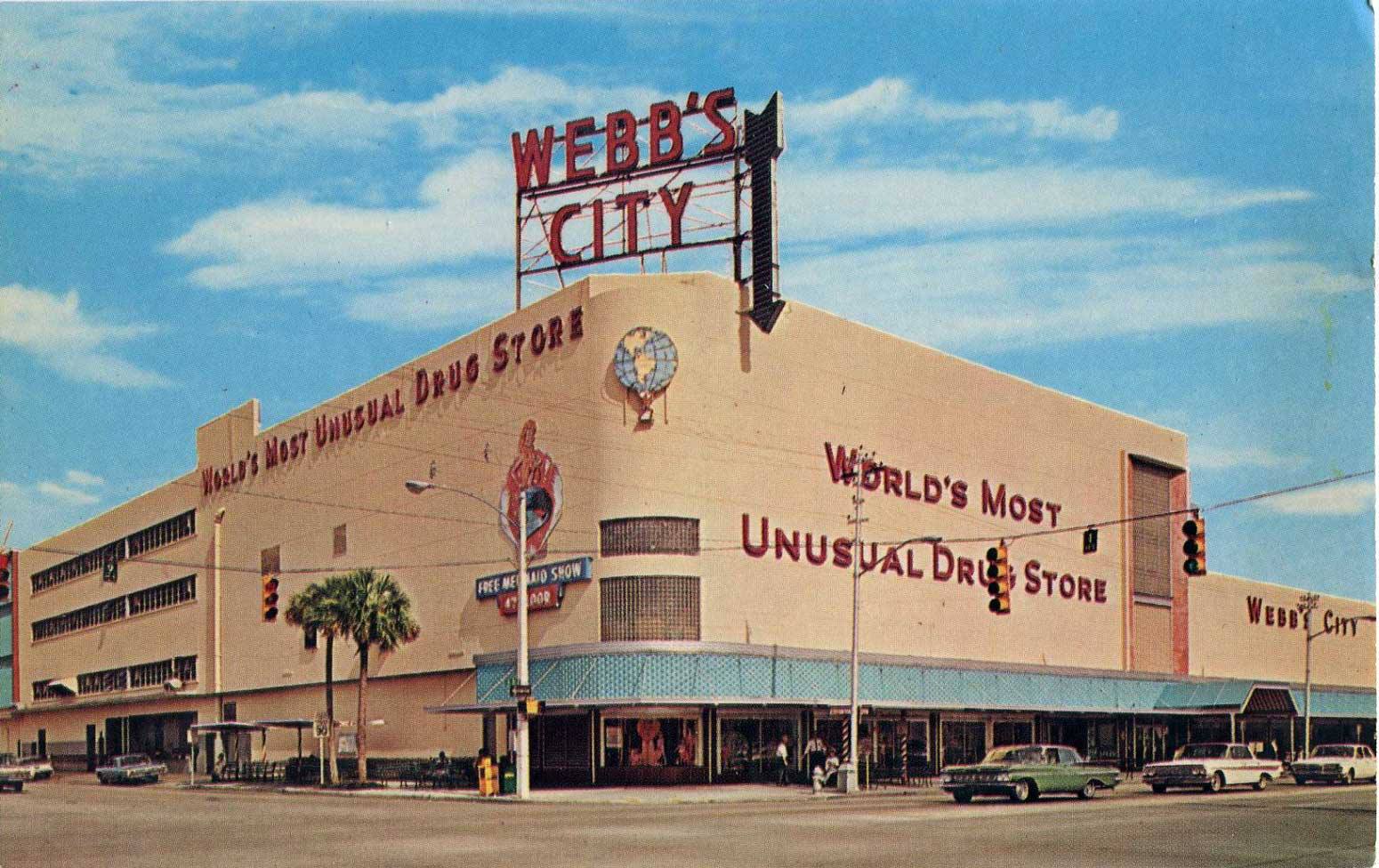
For 54 years, Webb’s City was one of the things visitors remembered most about St. Petersburg. From his flagship four-story building at the corner of 9th Street and 2nd Avenue South, J.E. “Doc” Webb lorded over an empire of 77 stores, encompassing seven city blocks.
You could get anything at Webb’s City – and St. Petersburg’s predominantly elderly population, traveling mostly on city bus lines, did. From groceries to clothing, from haircuts to shrubs, from furniture to automobile tires to bus and airline tickets, Webb and his 1,200 employees were only too happy to provide.
Written and first produced at the turn of the 21st century, Webb’s City: The Musical, honoring this innovative, unstoppable man and his unique vision, returns to the Palladium Theater this weekend in a scaled-down “concert” version.
More on that in a minute.
Doc Webb operated the country’s first one-stop shopping mecca – grossing an average of $22 million in a good year – and he was the undisputed king of retail in St. Petersburg during the 1930s, 40s and 50s.
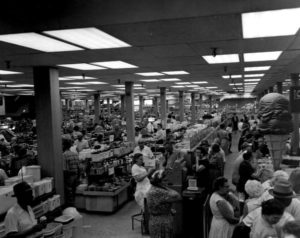 But that’s not why this Tennessee traveling salesman is a legendary figure, more than four decades after the mini-plazas and malls rendered “The World’s Most Unusual Drugstore” obsolete. Doc Webb’s great contribution to history – and the reason he made such a lasting mark on the memories of those who were there – is that he was a master of self-aggrandizement, the shill and the publicity stunt. History refers to him as “the P.T. Barnum of St. Petersburg.”
But that’s not why this Tennessee traveling salesman is a legendary figure, more than four decades after the mini-plazas and malls rendered “The World’s Most Unusual Drugstore” obsolete. Doc Webb’s great contribution to history – and the reason he made such a lasting mark on the memories of those who were there – is that he was a master of self-aggrandizement, the shill and the publicity stunt. History refers to him as “the P.T. Barnum of St. Petersburg.”
Webb bought in bulk and created massive displays; he sometimes undersold his actual cost, which got him into hot water with manufacturers on more than one occasion. His motto was “Stack it high and sell it cheap.” He is credited with the nation’s first “express line,” for 10 items or less, and the first escalators on the west coast of Florida.
It was said – loudly, by Webb himself – that Webb’s City sold 80,000 pounds of sugar and 22,500 cans of soup in a single day, and 40,000 pounds of fresh meats and 3,600 pounds of cheese in an eight-hour period.
Webb claimed to sell an average of 16,000 packs of cigarettes a day.
He sold dollar bills for 95 cents. Breakfast was two cents. In the parking lot, he shot the Flying Zacchinis out of a cannon. There were chimp acts, dog acts, horse acts, singers and dancers. The Arthur Murray School of Dance actually worked out on the roof of the building.
Many have fond memories of the coin-operated sideshow acts: The baseball-playing ducks, the kissing rabbits and the chicken that crazy-danced (according to legend, the bird was standing unceremoniously on a hotplate, which switched on when the nickel dropped).
 Then there were the live mermaids, lithe, long-haired and lounging dreamily inside clear plastic bubbles. A store employee would innocently ask a visiting child his or her name, and within seconds the “mermaid” was instigating a conversation with the wide-eyed youngster: “Hello, Debbie. How are you today? Have you ever met a mermaid?”
Then there were the live mermaids, lithe, long-haired and lounging dreamily inside clear plastic bubbles. A store employee would innocently ask a visiting child his or her name, and within seconds the “mermaid” was instigating a conversation with the wide-eyed youngster: “Hello, Debbie. How are you today? Have you ever met a mermaid?”
That sort of thing, people never forgot.
“I came from a family of seven,” relates St. Petersburg native Bill Leavengood, “and my dad would take us down there for the boys to get haircuts, because they were 25 cents, and included a big ice cream cone. It was like we were willing to get a crew cut, yet again, in order to get the free giant ice cream.”
Leavengood, a playwright and author who lived and worked in New York City and Los Angeles at various points in his career, eventually returned to his hometown. In 1999, he was approached by the Pinellas County Millennium Celebration about writing a play – a musical – about local history.
Jose Gaspar, and the Gasparilla legend, was his first suggestion. This was roundly dismissed as “too Hillsborough.”
They liked his second idea, a musical about “Doc” Webb and the things he did to get attention.
With a script by Leavengood, and songs by Lee Ahlin, Webb’s City: The Musical debuted at Ruth Eckerd Hall during the millennial year, then moved on to the Mahaffey Theater.
“Lee ended up writing just tremendous songs,” Leavengood says. “I think everything he brought to the table, only one I said ‘no, this one just doesn’t fit.’ He wrote each song to fit the feel of the decade that was being represented. We go through 50 years of American-slash-Florida history.”
Of course, not every aspect of the legend of Webb’s City – which succumbed to surburban sprawl and closed for good in 1979 – had been recorded for posterity. So, in addition to many, many hours of research, Leavengood used some poetic license to create characters to inhabit the world of Webb.
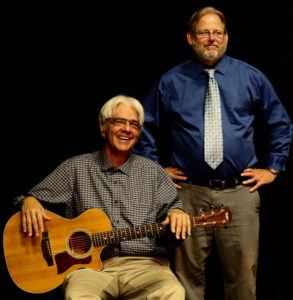
Playwrights Lee Ahlin, left, and Bill Leavengood. (Diana Lucas Leavengood)
He conducted dozens of first-person interviews. “During that era, it seemed like everybody either worked at Webb’s City, or has fond memories of going there, or being left there as a kid,” he says. “Literally – ‘all right, we’ll drop you off at Webb’s City in the morning, and we’ll come back in four hours and pick you up.’”
Less well-known was Webb’s very public support of the civil rights movement in the ‘60s. He spoke out against “urban renewal” and the destruction of older downtown housing. “Doc had quite an effect on the African American community here,” Leavengood explains. “He employed a lot of African Americans, he had a lot of African American customers, and that was somewhat unusual at the time.”
Reviews of Webb’s City: The Musical were positive, but there’s a very practical reason it’s being re-produced as a scaled-down “concert” version this weekend at the Palladium.
It’s a reason cost-conscious Doc Webb himself would appreciate.
“When you’re talking about a cast of 40, with a professional costume designer and set designer, it costs about a quarter-million dollars to do it,” explains Leavengood. “We did $150,000 in box office that second year, which means that we made $100,000 less than the show cost. So that’s why you go to the concert version, which costs about a tenth as much.”
The concert version uses multi-media projections to invoke the time and place. All of Ahlin’s songs remain. “Believe me, I miss a lot of the scenes,” says Leavengood. “I wrote a very good script, but I had to cut out huge amounts of my work.”
For this production, he explains, “I used a little bit of narration, with highlights of scenes to give the feel of what was happening, and the songs do a lot of the work.”
Tickets and info on Webb’s City: The Musical here.
